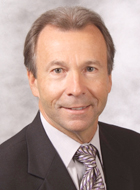
Healthcare management for long-term care facilities has always been an intricate and complex system, full of requisite processes to remain compliant while providing the very best possible care for each resident. The recent passing of federal statutes related to the new U.S. healthcare reform agenda means that long-term care providers must be even more cognizant of and prepared for the pending modifications.
The Patient Protection and Affordable Care Act was signed into law in March 2010 and will affect all segments of healthcare. One specific condition targeted at long-term care providers is Sec. 3310, which requires “reducing wasteful dispensing of outpatient prescription drugs in long-term care facilities.” This amendment will officially take effect Jan. 1, 2012, and will require uniform dispensing methods to residents taking Part D drugs. Waste-reducing dispensing methods of daily, weekly or automated doses of medication to Part D enrollees in long-term care facilities will be required.
The traditional approach
The traditional pharmacy model used by most facilities requires staff to manually manage pharmacy details, which can result in human error and jeopardize safety. In addition, dispensing 15- or 30-day supplies of medication, as most long-term care pharmacies do, results in waste and additional administrative burdens. When resident prescriptions are changed or the resident is discharged, many medications are discarded, resulting in substantial waste of valuable medications, unnecessary drug costs and disposal practices that may harm the environment.
Even in states where certain medications can be returned, the outcome is a time-consuming return process that means less nursing time is spent on patient care. The complexities of coordinating numerous Medicare Part D plans in the traditional manual environment often results in the dispensing of non-covered prescriptions and additional administrative processes.
An ounce of prevention …
Coupling an environment that barely works today with the upcoming changes resulting from healthcare reform and other quickly approaching changes such as MDS 3.0 and RUGs-IV, means long-term care providers need to think about their pharmacy service in a new way. A pharmacy approach that manages medication as opposed to just dispensing pills directs the focus to the three key issues that every long-term care facility needs to address: care, cost and compliance.
Pharmacy should help nurses provide better care by helping to manage time spent on medication passing and documentation, empowering nurses with information on drug interactions, providing tools to help in internal therapeutic interchange initiatives, and working to reduce unnecessary drugs when resident assessments indicate changes in conditions. Meanwhile, pharmacy should ensure that medications will be accurate and available when the resident needs them and provide caregivers the tools to have confidence in the dispensing prior to administration.
Yes, eliminating medication waste affects facility cost. However, clinical best practices can further reduce costs by managing necessary and eliminating unnecessary expenditures from care. Insight into facility usage details are needed to make a difference across a facility’s census of residents. Documentation and clinical management of resident drug regimens will help long-term care providers to achieve full compliance with federal guidelines and eliminate common citations like F-329 (unnecessary drugs).
The new model of pharmacy is a more advanced and comprehensive medication management system combining short-cycle and onsite dispensing with computerized prescription ordering, formulary management, bedside medication and treatment administration, and corresponding electronic medical records and reporting. This type of system improves overall resident outcomes while reducing waste, minimizing inventory, providing financial savings and improving compliance.
Focus on clinical outcomes
A medication management approach is focused on clinical outcomes that drive financial performance, rather than vice-versa. This approach provides an improved system for caregivers to move beyond the basics of simply filling prescriptions while recognizing significant financial results. Areas where a facility can recognize savings include reductions in quantity dispensing, potential for unnecessary drug elimination and dedicated resources to deal with the complexities arising from non-covered drugs.
The upcoming changes resulting from health care reform can seem overwhelming, but long-term care facilities should not put off choosing options that will make their pharmacy approach better. The benefits for improved care, cost and compliance are too compelling to ignore.
Richard Scardina is chief executive officer and director of Millennium Pharmacy Systems. Offering a better approach to pharmacy services, Millennium helps customers deliver the best care while reducing costs and meeting compliance demands. Scardina can be reached by phoning Millennium’s offices at (866) 466-779.



